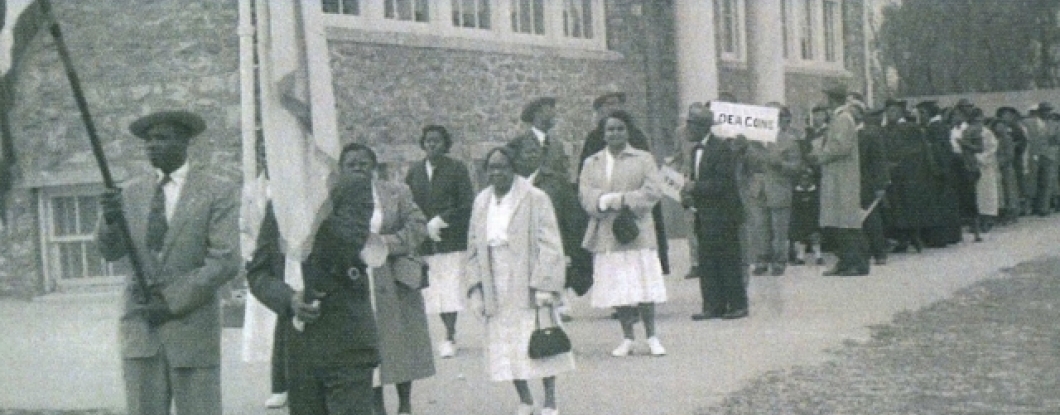Precious Places Community History Project Vol. 11

Precious Places Compilation Price:
Higher Education Institutions & Government Agency DVD | $139.00
K-12 & Public Libraries DVD | $79.00
Home Video DVD License – Restrictions Apply | $20.00
Scribe Video Center’s Precious Places Community History Project is a citywide effort to document the public spaces that define our neighborhoods. Produced in 2021 by communities throughout Philadelphia’s neighborhoods, this collection of short documentaries combines oral history, personal archives, and contemporary footage to redefine our region. This volume features films from the neighborhoods of Germantown, Fishtown/Port Richmond, Kensington, the Gayborhood, Chester PA and Hayti in Coatesville PA.
Films Included In The Compilation:
Fisher Park
Fisher Park in Olney has long been an important green oasis for the neighborhood. This film by Olney Culture Labs features The Roots Garden, which is a working farm that provides plots for growing food and opportunities for community education. Runtime 10:59
Go Back and Fetch It - Sankofa
This piece by Sankofa Freedom Academy Charter School tells the story of how freedom schools came to be in Philadelphia. Sankofa (which means 'go back and fetch it' in Ghanian) uses classical African models of education in response to oppression, and creates spaces for students to be their authentic selves. Runtime 9:53
Linking the Legacy: The Grand United Order of Tents
The Grand United Order of Tents, also known as the Tent Sisters, was a secret society of Black women founded in 1847. For many decades they met weekly in the area of Chester PA to form strong community bonds, support and uplift each other, and sing church hymnals. Of the many Tent groups that once existed, only one remains today. Runtime 11:43
Nidhamu Sasa
Nidhamu Sasa was an African Free School in Germantown, Philadelphia founded in the late 1960s. The Black Humanist Fellowship was created because Black institutions did not exist in education. The liberation movements of Africa were inspirational in proving educational perspective to the students. Runtime 11:17
Passtown School: Past, Present, and Future
Passtown School was a segregated school for Black students in the Hayti neighborhood of Coatesville, Pennsylvania, built in 1923. In this film by the Hayti Historical Society, students of the school are interviewed, and the preservation efforts of today are highlighted. Runtime 10:33
Piers Park
Piers Park is the name that community members have given the abandoned Conrail site on the Delaware river in the Fishtown/Port Richmond neighborhoods, also known as 'graffiti pier.' The park has become a popular green space for dog walkers, bird watchers, and families. Members of the Last Stop recovery center help to clean and maintain the park, and residents are hoping city officials will step in to make it part of the parks system. Runtime 9:13
Queer Longing for Belonging at 254
254 South 12th Street has long been a landmark for the Gayborhood, Philadelphia's historically LGBTQ neighborhood in Center City since the 1960s. Many clubs and bars at 254 became gathering places where the community could feel safe. There was also a history of racist exclusion which is examined in this film by The Philadelphia Queer Spaces Project. Runtime 11:14
When a House is Not Just a Home: The Colored Girls Museum
The Colored Girls Museum is a gathering place for Black women and girls to celebrate their history and their creativity. Started by Vashti Dubois, the house, referred to as 'she', creates a welcoming sanctuary and place of reflection. Runtime 12:34
Quotes From Educators:
"It [Precious Places] moves documentary practice away from the individualistic and idiosyncratic, typified in projects likeSupersize Me (2004, by Morgan Spurlock) and Fahrenheit 9/11 (2004, by Michael Moore), towards collaborative interactions between neighborhoods, filmmakers, and scholars who create new histories. As a result, the project constitutes more than an intervention into the conceptualization of documentary. Importing concepts from postcolonial studies, the project shows how to embody difficult and sprawling polyvcalities and microhistories as a way to reclaim and revitalize ideas about the archive, history and memory.
Rather than creating a single authorial vision, Precious Places advances the collaborative ethnographic and historical model, where community participants become the authors and not simply the objects of community history."
-- an excerpt from Patricia Zimmerman's article "Imbedded Public Histories" published in Afterimage, March/April 2006